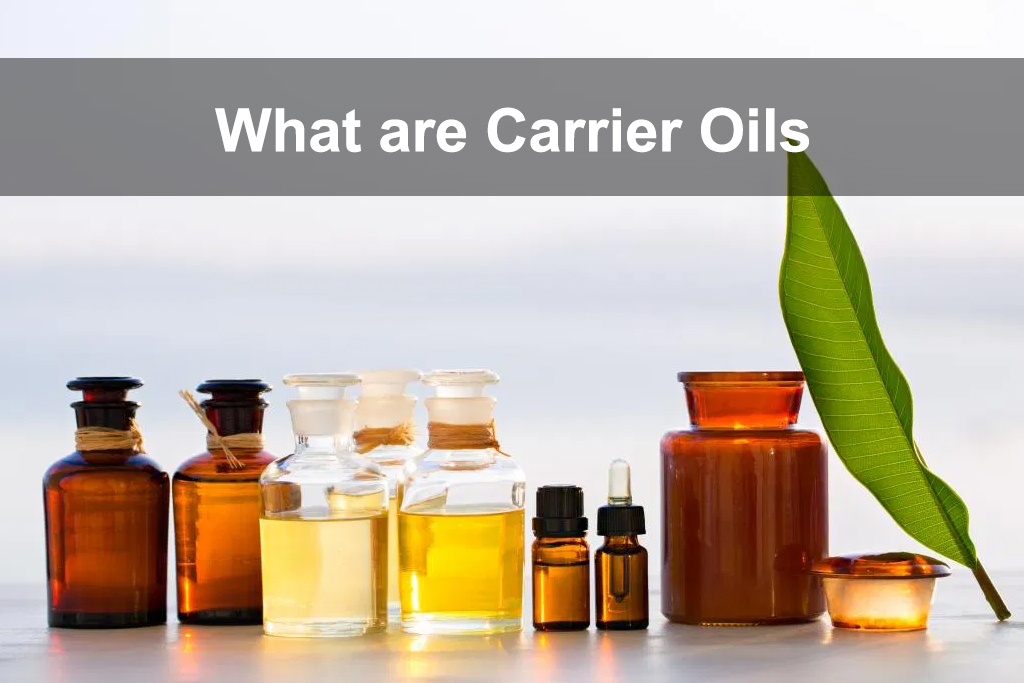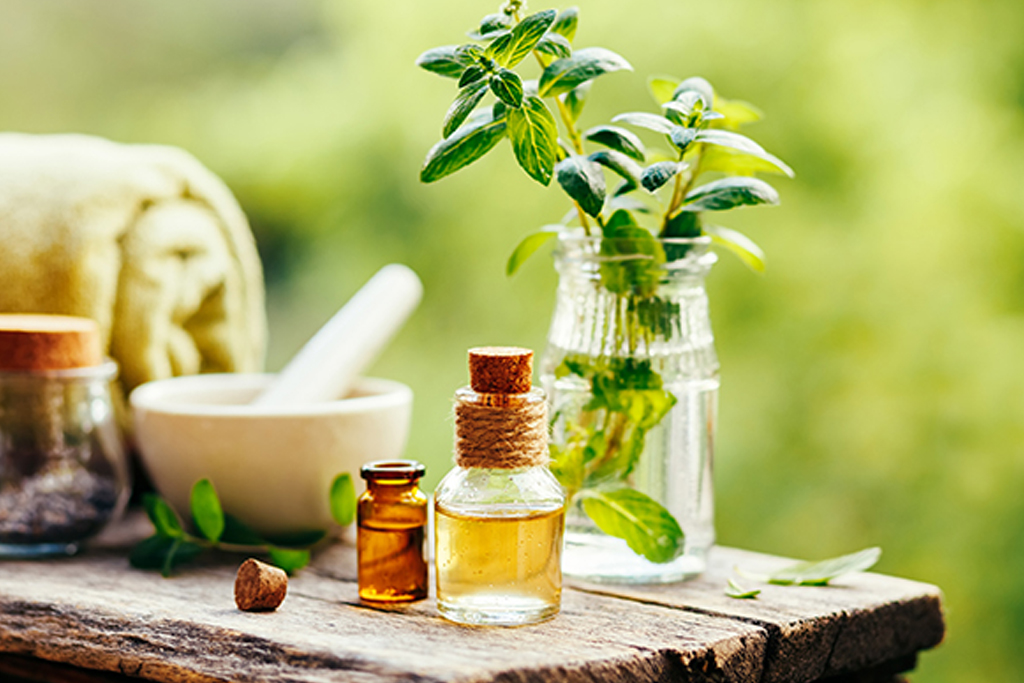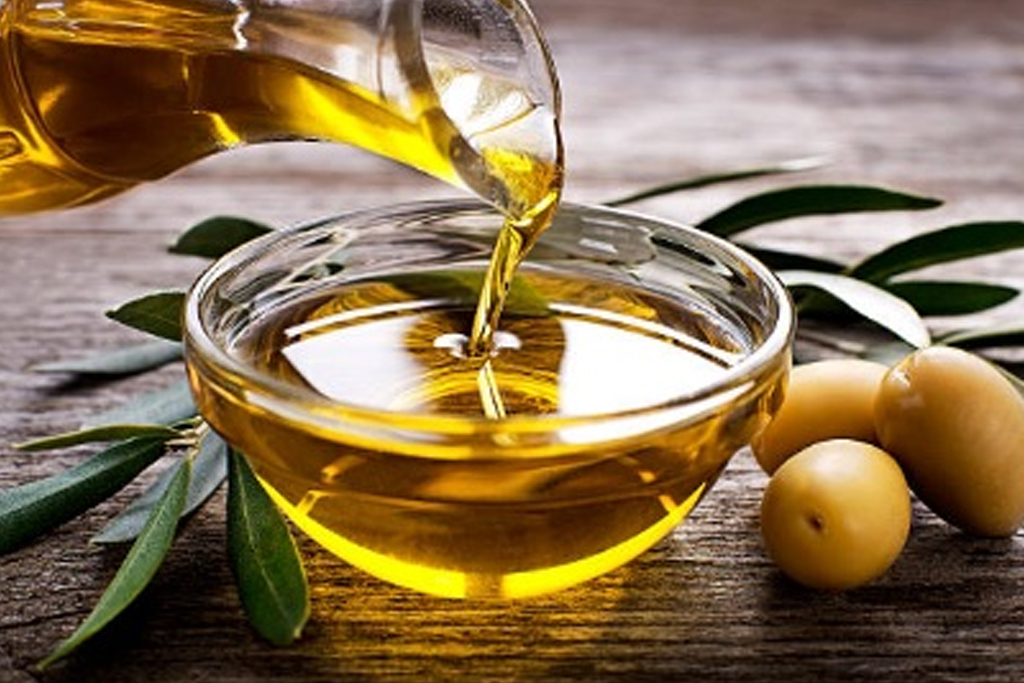Aromatherapy is a complementary therapy in which essential oils are applied on the body to aid physical and emotional well being. Carrier oils are used to dilute essential oils so that they can be safely applied on the body.

What is a carrier oil?
Carrier oils is a term given to base oils which are used to dilute essential oils and “carry” on your skin as essential oils are highly potent in nature and can cause irritation if applied directly.
They are also referred to as vegetable oils though some of them are not derived from vegetables but are extracted from the nuts, seeds or kernels of a plant.
They form an important part of aromatherapy or natural cosmetic as they affect the benefits and usefulness of essential oils, their colour, fragrance, therapeutic properties and shelf life of the products.
They have earned the name “fixed” oils as they do not evaporate and remain fixed on the skin. While some are odourless, some have slight smell which is sweet and nutty.
Composition of Carrier Oils
Different carrier oils carry their own amazing therapeutic properties based on their essential fatty acid composition and nutrients and sometimes they are overlooked as most of the times, people mainly focus on essential oils. Pairing essential oils with correct carrier oils can be extremely beneficial in attaining the final goal.
Each carrier oil is comprised of distinctive characteristics like colour, viscosity, penetration speed. Carrier oils generally contain fat soluble vitamins, minerals, antioxidants and other nutrients which adds moisture, helps soothe irritation and reduces dryness.
Difference between Essential Oils and Carrier Oils
- Essential oils are distilled from the leaves, bark, roots and other parts of the plant. They are highly concentrated and volatile, which means they evaporate quickly
- Carrier oils are cold pressed from the fatty parts of the plant. They do not evaporate and do not have strong aroma.

Extracting Carrier oils:
Although most of the carrier oils are extracted from the seeds and nuts, there are a few exceptions like Coconut oil which is extracted from the Copra which is the inner white flesh. Carrier oils are extracted using the following methods:
Cold Pressed oils are mechanically pressed from the fatty portions of the plant using heavy granite millstone or stainless steel presses so that the friction doesn’t produce a lot of heat. By keeping temperatures below 49°C (120°F) the goodness of the oil is preserved. The lower the temperature, the better the oil is! This process causes least harm to the oil and these oils have maximum nutritional value. The oil is then filtered and sold as final product.
In Expeller Method, oils are extracted using high pressure and sometimes heat may also be used. In this method, temperatures can be as high as 85°C (185°F). Expeller pressed oils are usually “Refined, Bleached, and Deodorized”. The refinement process helps to remove impurities, improves the colour/texture or stabilizes the shelf life, making these oils suitable and economical for use as cosmetic bases.
In Solvent Extraction, Plant materials are soaked in a solvent like petroleum ether, methanol, ethanol or hexane. The cell membranes of the plants are ruptured and the oils gets absorbed in the chemical. The solvent is then separated to get oil. However, some chemical residues are left and the resulting oil is not 100% pure.
Oil Maceration/ Infusion method is used for botanicals in which sufficient amount of oil cannot be extracted through pressing methods. In this method, plant material is bruised and soaked in base oil(vegetable Oil) for a certain amount of time. Sometimes low heat is also applied to facilitate infusion. The plant material is then filtered to eliminate any traces of plant matter, resulting in the final product having therapeutic properties of both the vegetable oil and the infused botanical material.
How to use Carrier oils?
Essential oils are volatile, which means they evaporate easily. They are also highly concentrated as they are basically essences of plants. Carrier oils do not evaporate and do not have strong aroma as well. This makes them a perfect pair together for diluting essential oils and taking benefit of the combined therapeutic properties of both.
Most of the Carrier oils can be applied directly as base on skin and do not cause skin irritation. The oils should be used depending on the skin type. They vary in consistency, aroma, shelf life and other characteristics.

Types of Carrier oils
Carrier oils can be categorized on the bases of their solidity
Hard oils are solid at room temperature. These oils should be melted into liquid form before using. They add firmness to products and without sufficient amount of hard oils the end product like soap will feel soft and sticky. Most popular hard oils are Coconut oil and Palm Oil.
Soft Oils are liquid at room temperature. They add nourishing and moisturizing properties to the end product. Without soft oils the end product like soap will begin to crack and become brittle. Most popular soft oils are Olive Oil, Sweet Almond oil etc.
How to Choose a carrier oil:
It is important to choose best quality carrier oils. If possible, always go for Cold Pressed Carrier oils as they are not heated and retain their beneficial properties. Price tag is always not an indicator of the quality of oils and therefore always research while purchasing and ask for cold pressed oils.
There are so many carrier oils to choose from and its best to experiment and see which oils works best for your skin. I have compiled a list of carrier oils depending on the skin type they work best for:
Absorption rate:
Main job of carrier oils is to moisturize and soften the skin. Carrier oils are loaded with fats which make skin happy. While some are absorbed quickly, others take time to sink in the skin. Some are drying oils while some leave your skin feeling soft and silky.
Depending on the product, the type of carrier oil should be selected. If you are making a moisturizer, look for a lightweight oil which absorbs easily. However, if you are making a lip balm, look for a oil which absorbs slowly and sits on the lips.
| Fast to Absorb | Average to Absorb | Slow to Absorb |
| These oils are quickly absorbed by skin and leave silky smooth finish | These oils leave a silky feeling on the skin | These oils tend to leave skin with a slight oily residue |
| Grapeseed | Jojoba | Avocado |
| Safflower | Sweet Almond | Borage |
| Hazelnut (drying) | Olive | Tamanu |
| Rosehip (drying) | Coconut | Pomegranate |
| Fractionated Coconut | Babassu | Castor |
| Canola | Sesame | Flaxseed |
| Apricot | Sunflower | Evening Primrose |
| Argan | Sea Buckthorn | |
| Neem |
Storing Carrier oils
Similar to essential oils, carrier oils should also be stored in cool dark place away from sunlight. Some carrier oils become rancid rapidly, their shelf life can be increased by adding 1% Vitamin E oil which acts as a natural preservative.
Shelf Life of Carrier Oils?
Carrier oils have limited shelf life and therefore eventually go bad. Some oils have shorter shelf life and should typically be used within six months while others have longer shelf life and may stay good for a year.
It is important that you store carrier oils in dark cool place to maximize their shelf life.
Precautions:
- It is important to note that some carrier oils may cause allergic reactions specially in people with nut allergies. Even though nut oils do not contain the proteinaceous part of the plant which causes allergic reaction, it is highly recommended that nut derived oils should be avoided by those with nut allergies.
- While blending essential oils with carrier oils always ensure that the total concentration of essential oils do not exceed 3%.
Disclaimer: The information provided on this page is for informational and educational purposes. I am not a medical professional and highly recommend consulting a doctor before using oils as part of any medical treatment.
